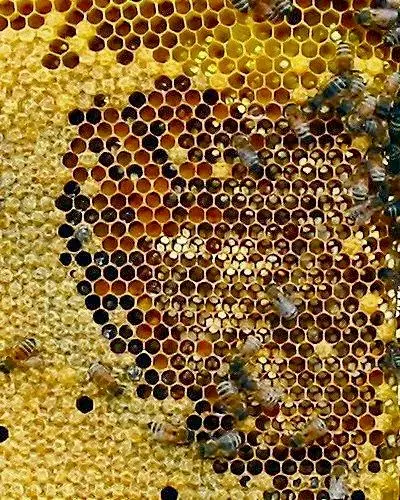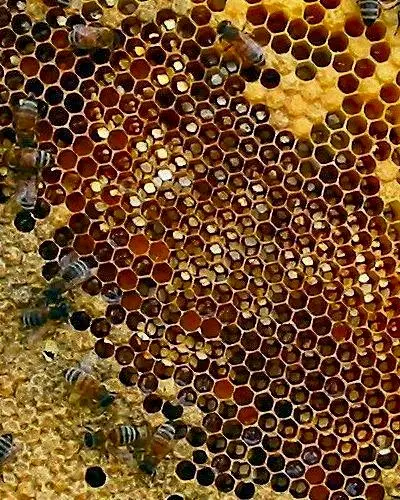Decoding Housel Positioning in Beehives!

Hello Bee Enthusiasts! 🌼✨ Ever wondered about Housel positioning in your beehives? The buzz is that it might be the secret to a thriving colony, making them healthier, happier, and more productive.
Let’s dive into the hive and explore!
Unveiling Housel Positioning
So, what’s the Housel buzz all about? Well, it’s a theory that mimics the natural broodnest orientation in a beehive:
- A central comb is the focal point, and Y patterns on cell bottoms guide comb building.
- Supposedly, this setup results in healthier, happier bees that swarm less, stay centered, and produce more honey.
Sounds intriguing, right? But does it really work?
My Housel Experience
I gave Housel positioning a shot after facing challenges with my hives. Small colonies, extensive losses, and weak survivors prompted me to explore new possibilities. Housel positioning was my experiment, and the results were interesting.
The small colonies stayed centered in the box during winter, which was impressive. Come spring, they flourished with robust clusters. Maybe there’s something to this Housel positioning, I thought.
Observing Top Bar Hives
Natural top bar hive comb provided a perfect opportunity to scrutinize the basics of Housel positioning. Detailed records and photos were taken, aiming to understand if the Y patterns truly dictated bee behavior.
Surprisingly, the combs didn’t conform to the expected Y patterns described in Housel positioning. The bees built with flexibility and adaptability, not necessarily following the prescribed orientation.

-This is top bar 5, the physical broodnest center. Is it any easier to determine how the Y’s point than on the image above?
Y Problems and Perceptions
There’s a hitch with the Y concept. How we perceive Y patterns might differ. What looks like an upside-down Y to one person might seem like a straight line to another. It’s all about the interpretation.
In natural comb, Y patterns vary, making it impossible to consistently determine any orientation. Human minds crave order, even when bees build with more flexibility than our preset notions.
The Big Reveal
In the end, my initial impressions about Housel positioning were shaken. Bees staying centered has more to do with colony size than comb orientation. It seems that the bees couldn’t care less about Housel positioning.
So, if you’re thinking of trying Housel positioning, go ahead and mark your frames for consistency. However, don’t expect miracles. Bees might just be more adaptable architects than we give them credit for.
-Buzzingly Yours, D 🐝🤠
